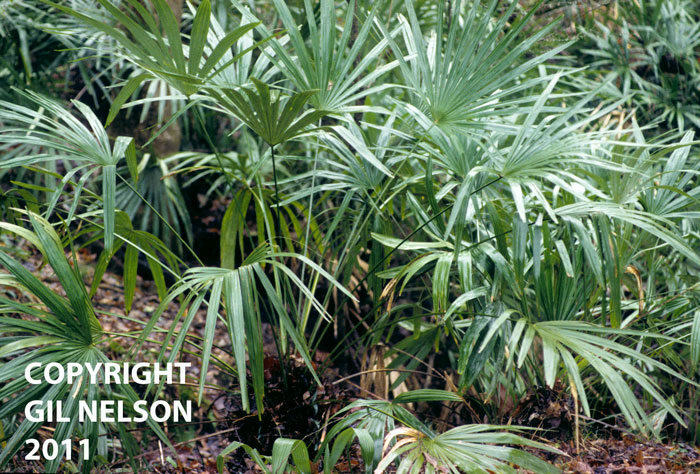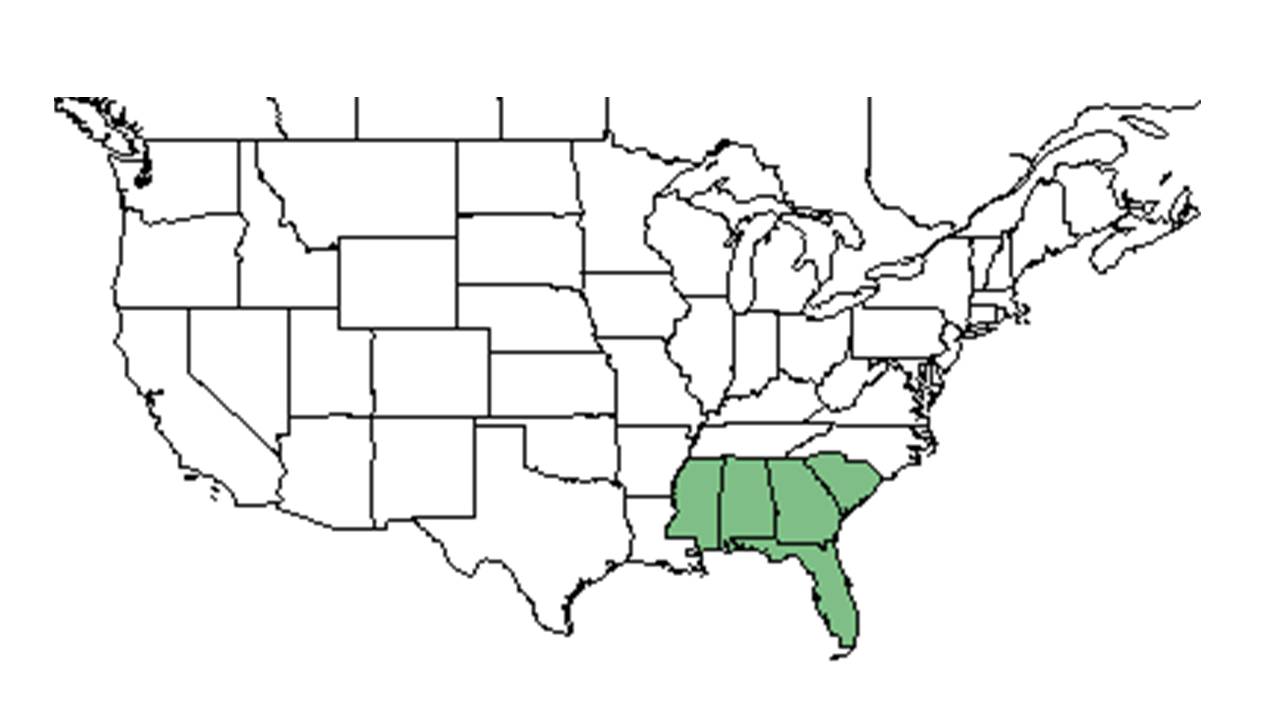Difference between revisions of "Rhapidophyllum hystrix"
(→Photo Gallery) |
(→Ecology) |
||
| Line 32: | Line 32: | ||
Flowering has been observed in February and May, while fruiting has been observed in February and August (FSU Herbarium). | Flowering has been observed in February and May, while fruiting has been observed in February and August (FSU Herbarium). | ||
| − | ===Seed dispersal=== | + | <!--===Seed dispersal===--> |
| − | ===Seed bank and germination=== | + | <!--===Seed bank and germination===--> |
| − | ===Fire ecology=== <!--Fire tolerance, fire dependence, adaptive fire responses--> | + | <!--===Fire ecology===--> <!--Fire tolerance, fire dependence, adaptive fire responses--> |
| − | ===Pollination=== | + | <!--===Pollination===--> |
| − | ===Use by animals=== <!--Herbivory, granivory, insect hosting, etc.--> | + | <!--===Use by animals===--> <!--Herbivory, granivory, insect hosting, etc.--> |
| − | ===Diseases and parasites=== | + | <!--===Diseases and parasites===--> |
| + | |||
==Conservation and Management== | ==Conservation and Management== | ||
==Cultivation and restoration== | ==Cultivation and restoration== | ||
Revision as of 18:45, 2 May 2016
| Rhapidophyllum hystrix | |
|---|---|

| |
| Photo taken by Gil Nelson | |
| Scientific classification | |
| Kingdom: | Plantae |
| Division: | Magnoliophyta – Flowering plants |
| Class: | Liliopsida – Monocotyledons |
| Order: | Arecales |
| Family: | Arecaceae ⁄ Palmae |
| Genus: | Rhapidophyllum |
| Species: | R. hystrix |
| Binomial name | |
| Rhapidophyllum hystrix (Pursh) H. Wendl. & Drude ex Drude | |

| |
| Natural range of Rhapidophyllum hystrix from USDA NRCS Plants Database. | |
Common name: Needle palm
Contents
Taxonomic notes
Description
A description of Rhapidophyllum hystrix is provided in The Flora of North America. Rhapidophyllum hystrix is a perennial shrub with needles at the base of its leaves (FSU Herbarium).
Distribution
Ecology
Habitat
R. hystrix occurs most frequently in shaded wet sandy or loamy soil (FSU Herbarium). It can be found in floodplains, as well as on the slopes of steephead ravines and on limestone outcrops (FSU Herbarium). It appears in several native community types, including mixed hardwood woodlands, Magnolia-Tilia-Hydrangea bluffs, and cabbage palm-hardwood hammocks (FSU Herbarium). It can also occasionally be found in disturbed areas like roadsides (FSU Herbarium). Associated species include Sabal minor, Magnolia virginiana, Hydrangea quercifolia, Sabal palmetto, and Gordonia lasianthus (FSU Herbarium).
Phenology
Flowering has been observed in February and May, while fruiting has been observed in February and August (FSU Herbarium).
Conservation and Management
Cultivation and restoration
Photo Gallery
References and notes
Florida State University Robert K. Godfrey Herbarium database. URL: http://herbarium.bio.fsu.edu. Last accessed: June 2014. Collectors: Loran C. Anderson, Robert K. Godfrey, Lisa Keppner, Angus Gholson, James R. Burkhalter, R. Kral, Gary R. Knight, Mark Garland, Sidney McDaniel, Richard D. Houk, L.B. Thein, S.D. Latimer, Patricia Elliot, George R. Cooley, Carroll E. Wood, Jr., Kenneth A. Wilson, Leonard J. Brass, R.S. Mitchell, and A.F. Clewell. States and Counties: Florida: Citrus, Clay, Escambia, Gadsden, Jackson, Jefferson, Lake, Leon, Liberty, Okaloosa, Santa Rosa, Taylor, Wakulla, and Washington. Georgia: Clay and Grady. Alabama: Baldwin.